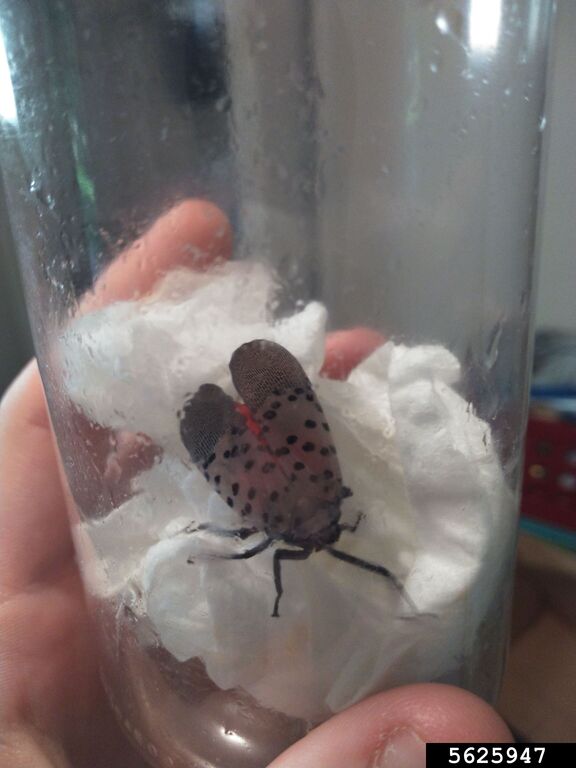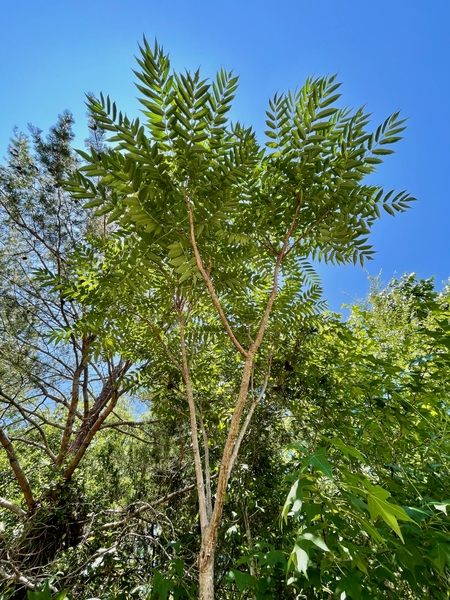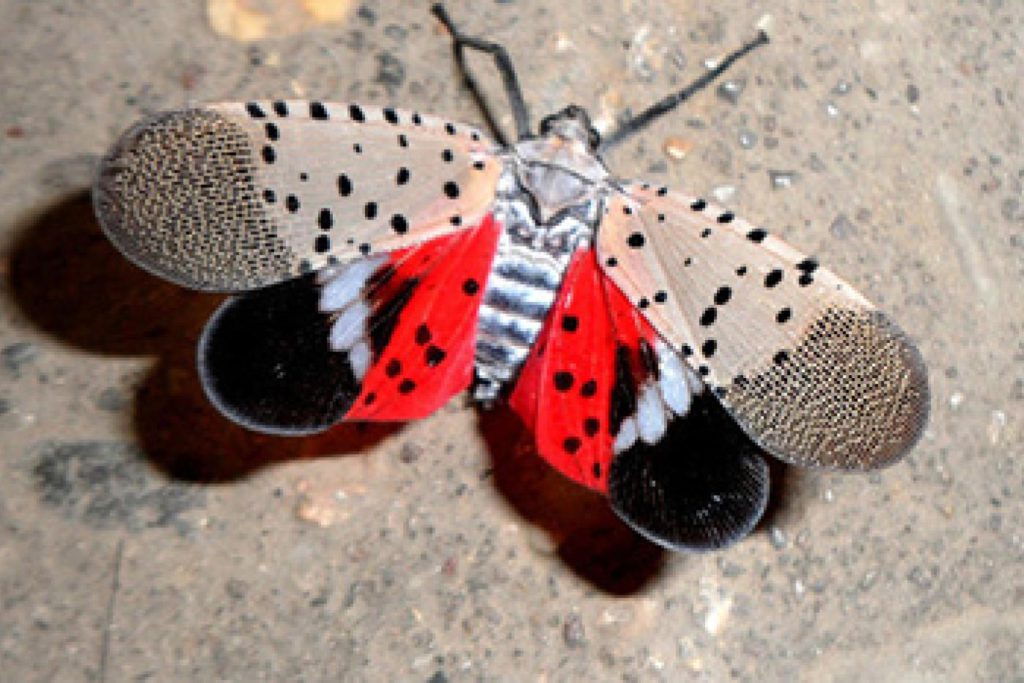Kill-On-Site Orders for Maiden Residents
But please take a photo first!
Spotted lanternfly, Lycorma delicatula

First found in eastern Pennsylvania in 2014, the spotted lanternfly (Lycorma delicatula) is an invasive insect pest that is now established in New York, Delaware, and Virginia and it has recently been found in Tennessee and North Carolina. Early detection is critical in stopping its spread and minimizing the devastating effect it could have on NC landscapes and agricultural crops, particularly grapevines, fruit trees, and a wide range of hardwood trees. The messy honeydew they secrete also causes problems by attracting ants, wasps, and black sooty mold to neighborhoods and businesses, affecting property values, tourism, and human health.
If you see a spotted lanternfly, you should do the following:
· Take a photo and report the sighting on the North Carolina Department of Agriculture online report tool at ncagr.gov/SLF
· Kill the insect. You can kill the insect by squishing it or placing it in a container of rubbing alcohol.
· Look for additional spotted lanternfly in the area. If your report is spotted lanternfly, you will be contacted by Plant Industry Division staff for more information.
Remember: See it. Snap it. Report it.
There are no known biological controls or native predators for spotted lanternfly, so early detection and rapid response is the only way to keep this highly invasive pest out of our state. You are the best resource to watch for invasive species and help prevent the spread of the spotted lanternfly in North Carolina.
Content provided by: NC State Extension

Additional Steps You Can Take Include:
Become familiar with Tree of Heaven (Ailanthus altissima), the preferred host plant for spotted lanternfly. Note the location of trees in your area and check them regularly in the summer for immature insects (May-September), adults (July-December), and egg masses (October-June).

Check your vehicle for egg masses/juvenile or adult insects if traveling through infested areas. As an extra measure, take vehicles through the car wash before returning to NC.
If you own a vineyard or orchard, NCDA&CS recommends you remove all Tree of Heaven on your property as a preventative measure against this pest.
Get the word out. Talk to people and businesses in your community. Make them aware of this potential pest and what to look for.
| Egg Mass | Early Instars | Late Instar | Adult |
|---|---|---|---|
 |  |  |  |
| Each egg mass is ~1-inch in size and contains roughly 35 eggs | The 1st instar is small (roughly the size of a tick) and grows to ~1/4-in size (3rd instars) | Bright red and ~1/2-in in size | From head to wing tip ~1-in in size |
| September to May | Late March to June | Late May to July | July to December |
For More Information:
North Carolina Department of Agriculture & Consumer Services


